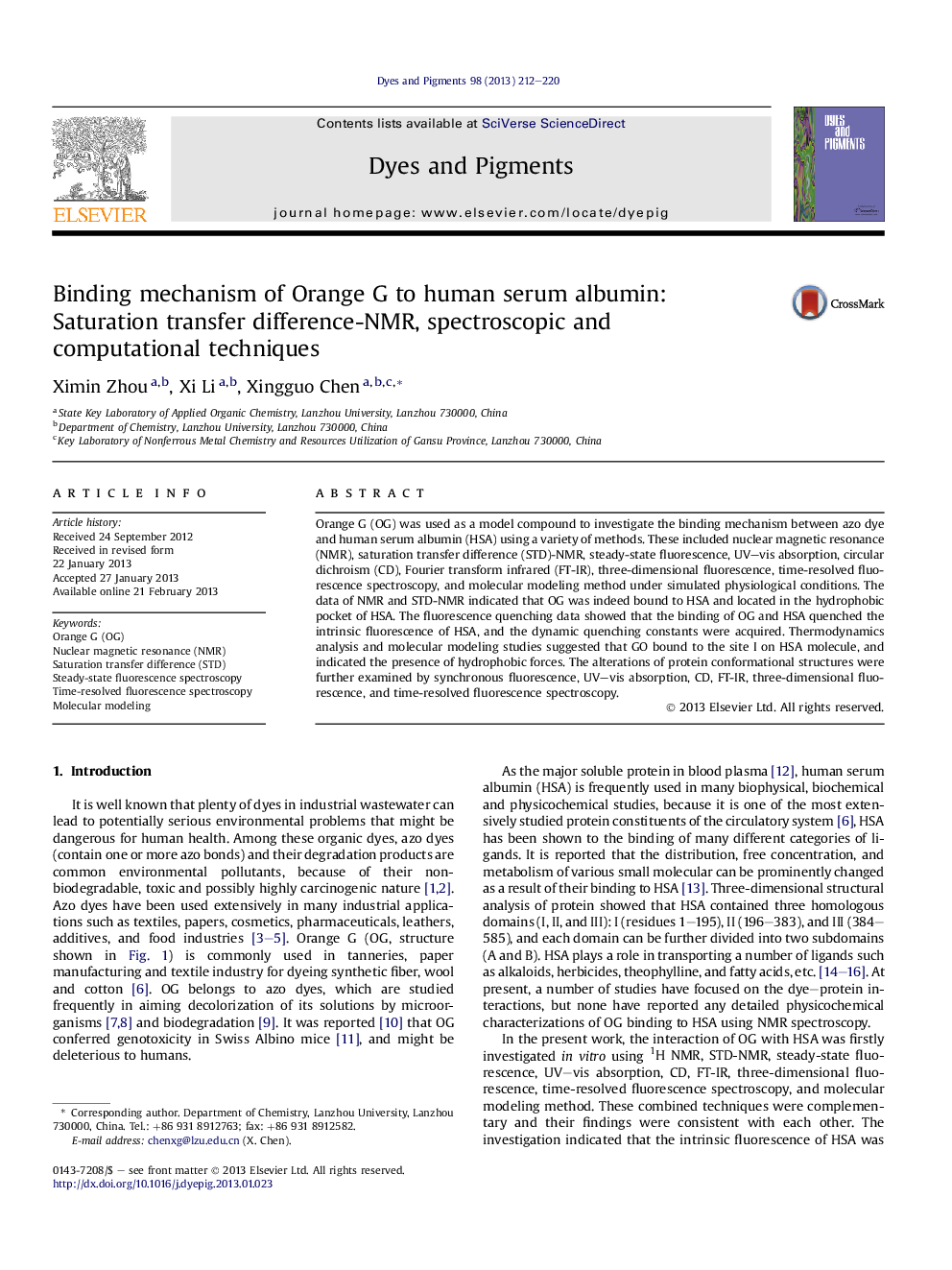| Article ID | Journal | Published Year | Pages | File Type |
|---|---|---|---|---|
| 176418 | Dyes and Pigments | 2013 | 9 Pages |
Orange G (OG) was used as a model compound to investigate the binding mechanism between azo dye and human serum albumin (HSA) using a variety of methods. These included nuclear magnetic resonance (NMR), saturation transfer difference (STD)-NMR, steady-state fluorescence, UV–vis absorption, circular dichroism (CD), Fourier transform infrared (FT-IR), three-dimensional fluorescence, time-resolved fluorescence spectroscopy, and molecular modeling method under simulated physiological conditions. The data of NMR and STD-NMR indicated that OG was indeed bound to HSA and located in the hydrophobic pocket of HSA. The fluorescence quenching data showed that the binding of OG and HSA quenched the intrinsic fluorescence of HSA, and the dynamic quenching constants were acquired. Thermodynamics analysis and molecular modeling studies suggested that GO bound to the site I on HSA molecule, and indicated the presence of hydrophobic forces. The alterations of protein conformational structures were further examined by synchronous fluorescence, UV–vis absorption, CD, FT-IR, three-dimensional fluorescence, and time-resolved fluorescence spectroscopy.
Graphical abstractFigure optionsDownload full-size imageDownload as PowerPoint slideHighlights► STD-NMR, 1H NMR, optical spectroscopy and molecular modeling method were utilized. ► The bonding between OG and HSA was investigated qualitatively and quantitatively. ► The quenching mechanism for OG–HSA system was dynamic quenching mechanism. ► The molecular modeling and thermodynamic analysis determined the binding site.
